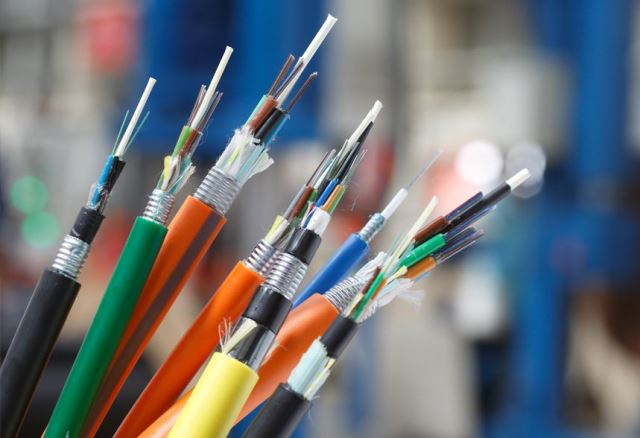Fiber rollout has progressed exponentially since the first edition of our fiber-to-the-home report in 2010. More than 20 markets now have at least 50 percent fiber coverage, and more than eight markets have at least 90 percent nationwide.
 People are collaborating with machines and applications to make improvements to mobility, economies, decision-making, and life in general. Non-telecom organizations, such as energy companies, railway operators and local municipalities have also entered this thriving market.
People are collaborating with machines and applications to make improvements to mobility, economies, decision-making, and life in general. Non-telecom organizations, such as energy companies, railway operators and local municipalities have also entered this thriving market.
Fiber take-up improves worldwide
With 5G deployment models crystallizing, operators are also considering 5G-based technologies to complement high-cost, last-mile fiber access, especially in rural areas. While there were big improvements in fiber rollout from 2012 to 2017, take-up was still lagging behind, even though several markets invested large amounts of Capex into nationwide fiber. However, we now see take-up rapidly improving, driven by both effective migration of legacy customers to fiber and competition pushing demand for higher-speed broadband adoption at home.
Some markets, such as Qatar, the UAE and New Zealand, have conducted effective migration projects, moving all their legacy customers to fiber by visiting home by home, swapping routers and upgrading customers to higher-speed, triple-play bundles. In other markets, such as Singapore, Hong Kong, Sweden, Portugal and Spain, competition for high-speed broadband between telecom operators and cable operators, as well as migration, has helped the take-up of fiber-based, higher-speed broadband plans.
The rise of fiber and 4K
Increasing use of fiber, in turn, is driving take-up of innovative services. A common fiber-enabled new service is gigabit-speed broadband offerings, often combined with 4K TV. Fiber use is also enabling multi-play bundles (triple and quadruple play) and the use of high-end gigabit routers at home.
A successful 4K TV offering requires the right combination of devices, content and connectivity. There are more than 100 4K devices currently available, and 4K content is slowly picking up pace, via traditional linear TV channels as well as non-linear video on demand. 4K connectivity is also increasingly available to homes.
While 4K TV is increasingly popular and currently available in more than 30 markets, in most of these markets 4K channels are marketed as add-ons to the basic triple-play bundles, and the quantity of 4K content is still limited. According to our benchmark, Ooredoo Qatar is now the leader in 4K TV, with more than 70 percent nationwide penetration.
We expect availability of 4K content to continue increasing in the coming years. In 2016, Netflix was one of the first major content producers to offer 4K video-on-demand content. This was followed by culture/leisure 4K TV channels such as Love Nature 4K, Festival 4K and others. Lately, premium sports are also available in 4K, e.g., BeIN sports 4K and BT sports 4K showing the UEFA Champions League and other sports. The 2018 PyeongChang Olympic games were broadcast in 4K in some markets, as well as the FIFA World Cup 2018, giving a further push to 4K TV consumption.
Gigabit wi-fi in the home
Telecom operators are realizing that providing just connectivity to homes is not sufficient for a high-end customer experience. They increasingly also have to manage wi-fi connectivity, ensuring it reaches the corners of all the rooms in a home. This, in turn, is driving the trend of deploying high-end wi-fi routers at home.
Google WiFi was one of the first to popularize high-end routers in 2016. Singapore was one of the first countries to bundle high-end routers (e.g., StarHub provides Google WiFi routers to its customers) with 12- and 24-month contracts. Ooredoo Qatar also provides Netgear Orbi mesh wi-fi routers to its customers with 12- and 24-month contracts.
Fiber now and in the years to come
There are still some markets which have not yet shown large gains in fiber deployment – e.g., the UK, Germany, Austria and Italy, where traditional non-telecom firms are making inroads into fiber deployment (e.g., energy company Enel announcing nationwide fiber deployment with its newly created subsidiary, OpEn Fiber).
Fiber markets are increasingly associated with demand instead of supply, as in the past. As customers demand higher broadband speeds, demand for fiber also increases. Markets that have shown the biggest advancements in fiber take-up are Qatar, Singapore, the UAE and New Zealand. Success in fiber take-up in these markets has been driven by effective migration and competition.
Fiber to the home, in turn, is driving take-up of innovative services such gigabit broadband, 4K TV and other ancillary products. Telco operators are moving away from providing just high-speed broadband to also bundling services enabled by this high-speed broadband. As telecom operators increase their presence inside their customers’ homes with high-end wi-fi routers and services such as 4K TV, this will become an ideal platform to deliver future smart-home services.
By Karim Taga and Glen Peres, Arthur D. Little





